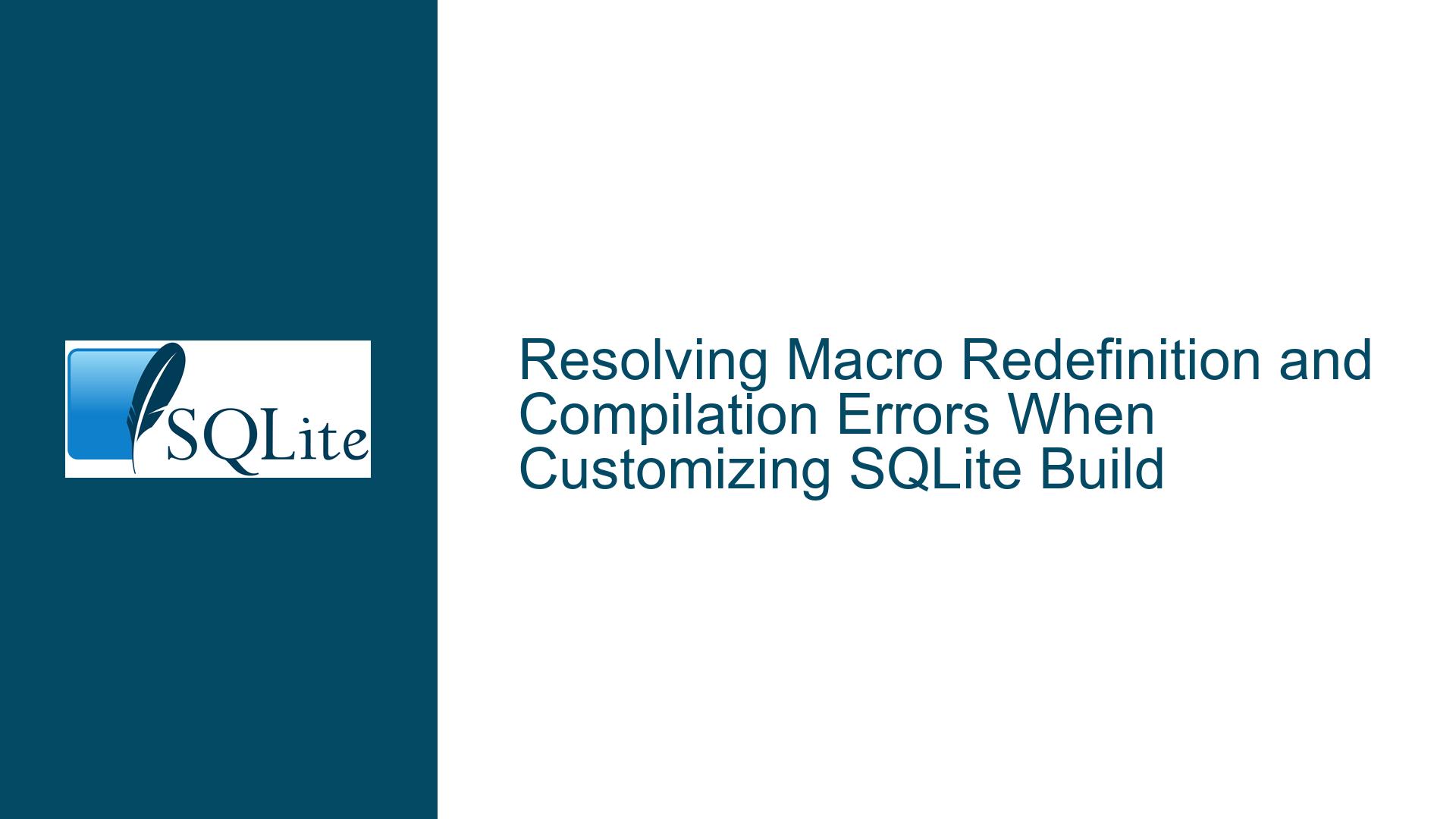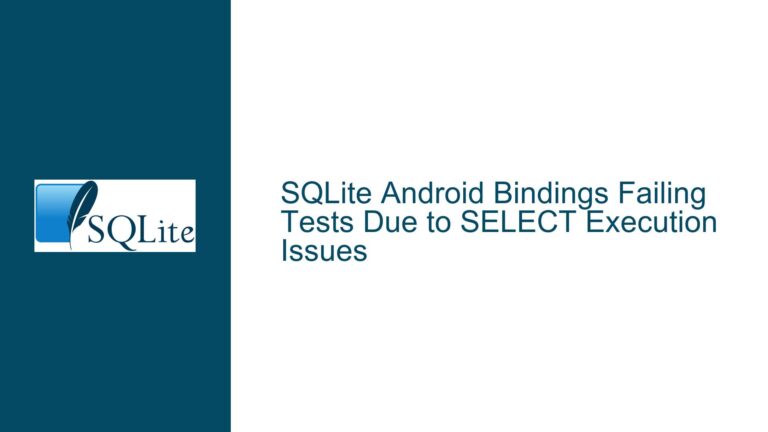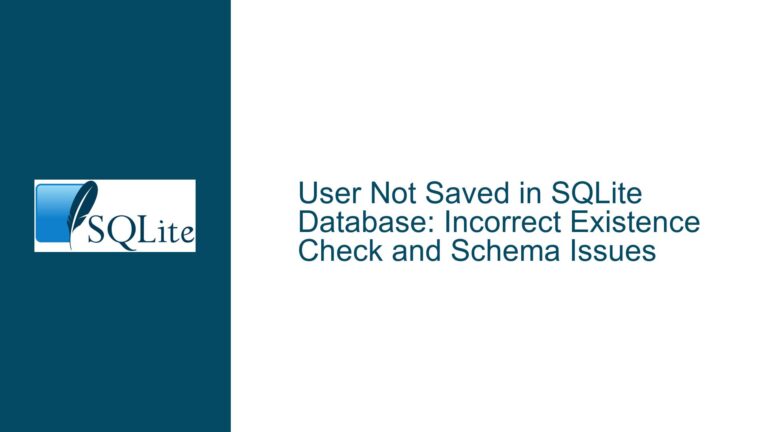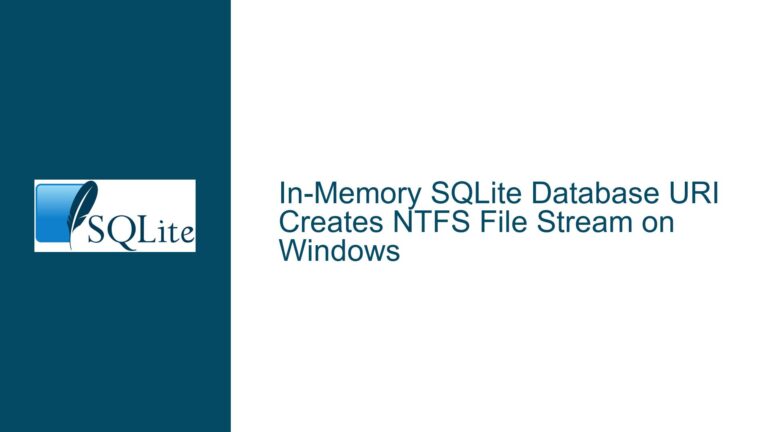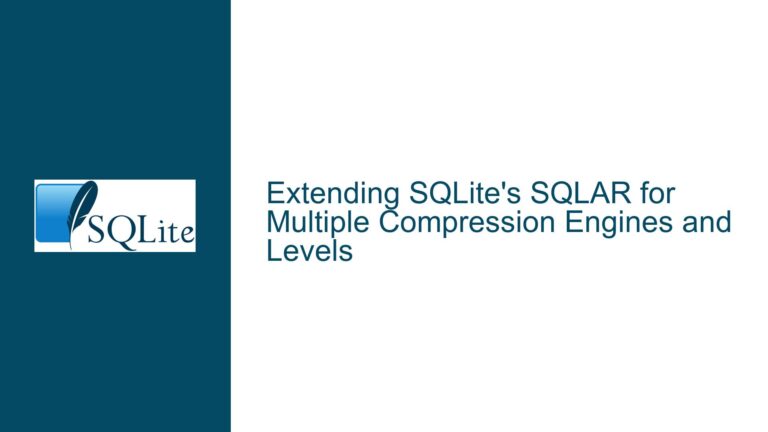Resolving Macro Redefinition and Compilation Errors When Customizing SQLite Build
Understanding Macro Redefinition Warnings and Compilation Failures in SQLite Amalgamation Builds
Issue Context: Compilation Errors Due to Conflicting Preprocessor Definitions
The core problem revolves around attempts to customize an SQLite amalgamation build by directly modifying the sqlite3.c source file with #define directives for compile-time options. This results in two categories of errors:
- Macro Redefinition Warnings: Multiple SQLite feature flags (e.g.,
SQLITE_ENABLE_FTS4,SQLITE_THREADSAFE) are defined twice: once in thesqlite3.cfile (via manual edits) and again through the build system’s command-line arguments or auto-generated configuration. - Fatal Syntax Error: A malformed preprocessor directive in
sqlite3.c(line 90658) causes the build to fail. The line#if SQLITE_ENABLE_STAT4expects a numeric value but receives an improperly defined macro.
These issues arise from a misunderstanding of how SQLite’s amalgamation build process handles compile-time options. The amalgamation is designed to be configured externally via compiler flags, not by editing the source file directly.
Root Causes: Why Manual Source Edits Break the Build Process
Three primary factors contribute to the observed errors:
1. Duplicate Definition of Compile-Time Options
SQLite’s configure script automatically sets default values for many compile-time options. When these options are redefined in sqlite3.c, the compiler detects conflicting definitions. For example:
SQLITE_THREADSAFEis set to1by theconfigurescript but manually overridden to2in the source.- Features like
SQLITE_ENABLE_FTS4are enabled by default in the amalgamation but redundantly defined in the edited file.
This violates the "Single Source of Truth" principle for build configuration. The compiler cannot resolve which definition to prioritize, leading to warnings that may cascade into hard errors depending on context.
2. Incorrect Macro Definition Syntax
The manual #define statements in sqlite3.c omit explicit values for boolean flags. For example:
#define SQLITE_ENABLE_FTS4
This is equivalent to #define SQLITE_ENABLE_FTS4 1, but SQLite’s internal checks (e.g., #if SQLITE_ENABLE_FTS4) expect an integer literal. While this usually works, inconsistent definitions across the codebase can trigger edge-case failures. The SQLITE_ENABLE_STAT4 error exemplifies this: the amalgamation’s internal conditional logic expects a valid integer but receives an ambiguous definition.
3. Build System vs. Source-Level Configuration Conflicts
The configure script generates a Makefile with compiler flags (-D options) that propagate definitions to all source files. When the same flags are defined in sqlite3.c, the build system’s flags take precedence, but the duplicated definitions still produce warnings. These warnings indicate deeper misconfigurations that could affect portability or runtime behavior.
Resolution Strategy: Correctly Configuring SQLite Compile-Time Options
To eliminate redefinition warnings and ensure a clean build, follow these steps:
Step 1: Revert All Manual Edits to sqlite3.c
Restore the original amalgamation files to avoid conflicts:
# Extract a fresh copy of the amalgamation
tar xzf sqlite-autoconf-3440200.tar.gz
cd sqlite-autoconf-3440200
Step 2: Use CFLAGS to Pass Custom Definitions
Compile-time options must be specified through the CFLAGS environment variable or ./configure arguments. This ensures definitions are applied globally and avoids duplication:
./configure CFLAGS="-DSQLITE_THREADSAFE=2 -DSQLITE_ENABLE_FTS4 ..."
Replace ... with all desired options from the original list, using -D syntax.
Step 3: Validate Definition Syntax
Ensure all -D flags adhere to SQLite’s expected formats:
- Boolean Flags: Use
-DFLAG=1or-DFLAG=0(e.g.,-DSQLITE_ENABLE_JSON1=1). - Numeric Values: Specify exact values (e.g.,
-DSQLITE_DEFAULT_CACHE_SIZE=-16000). - Feature Enablers: Omit the value for simple enables (e.g.,
-DSQLITE_SOUNDEX).
Step 4: Inspect Auto-Generated Configuration
After running ./configure, review the config.log file to verify that your CFLAGS are correctly applied. Search for entries like:
configure:5443: checking for SQLITE_THREADSAFE
configure:5469: result: 2
Step 5: Build and Test the Binary
Execute make and confirm that no warnings or errors appear. Validate the build by querying SQLite’s compile options:
./sqlite3 :memory: "PRAGMA compile_options;"
Cross-check the output against your intended configuration.
Step 6: Cross-Platform Consistency
To replicate the build on Ubuntu 20.04, ensure the same CFLAGS and toolchain versions are used. Address platform-specific dependencies (e.g., libtcl-dev for TCL bindings) before compiling.
Key Takeaways for Custom SQLite Builds
- Avoid Source Modifications: The amalgamation is not meant to be edited directly. Use compiler flags for customization.
- Leverage Official Documentation: The SQLite How to Compile guide explicitly discourages manual edits to
sqlite3.c. - Prefer
configureOver Hardcoding: The build system exists to manage platform-specific nuances and definition conflicts. - Test Across Environments: Use Docker or virtualization to ensure consistent builds between macOS and Linux.
By adhering to these practices, developers can reliably customize SQLite builds without triggering cryptic compiler errors or configuration mismatches.
